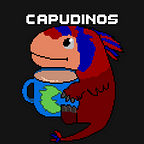The way to “de-extinction” (Part 1)
Is so common to associate paleontology with the resurrection of extinct animals, since it is true that technology and science advance rapidly to reach formulas worthy of fiction and let’s be realistic: who does not want a dinosaur as a pet? At least I would love to travel to university on top of a Brontosaurus, but is this possible or just a product of a naive imagination? Although resurrecting extinct creatures is a morally questionable issue that generates great debate, it is necessary to analyze its limitations: cloning a species from DNA is almost impossible with current technology due to the inability to obtain a complete DNA sequence.
Why don’t they get it from fossilized mosquitoes in Amber?
In Jurassic Park, we see DNA being rescued for preservation through the blood of mosquitoes fossilized in Amber; however, before continuing, I must mention one of the favorite phrases of the famous YouTuber Dross:
Reality surpasses fiction.
In the year 2020, an important discovery occurred, during the toilet paper crisis, where the “skull” of a dinosaur, of the species Ocoludentavis khaungraae, from approximately 99 million years ago, was found in Amber; however, for so many millions of years the DNA has been lost almost entirely, in fact, in the Jurassic Park movie itself it is mentioned that the gaps were filled with frog genetic material, even so, the fossil of the small dinosaur did not stop being amazing and spectacular.
Short note: Although I have learned a lot about the subject, I clarify that I am not a geneticist, if there is a specialist who needs to correct any wrong data, feel free to leave your comment and I will to consider it👍.
And the species of 31 000 years? Was it revived or not?
Defying all the limitations and obstacles mentioned, a group of scientists achieved the feat of resurrecting a plant that had been frozen for 31,800 years. Actually this news is not recent, since it was published on February 21, 2012, but I want to clarify some details about the "resurrection" of this species to avoid misinformation or misunderstandings that spread quickly in social networks.
A short summary of the article
The plant corresponds to the species "Silene stenophylla", which is not extinct, but they found samples of its fruit, from the Pleistocene, fossilized in permafrost with temperatures of -7 °C, which were found inside the burrow of a squirrel in Siberia.
The plant was "revived" by in vitro tissue culture, resulting in a hermaphroditic plant, with both male and female flowers.
The event, apart from being incredible, shows the ability of permafrost to preserve the ancient genetic code of species that have already disappeared, which was a step forward on the path of microevolution.
Note: In some unofficial sources, it is erroneously said that the seeds were grown by the scientists or the squirrel ate the seeds.
De-extinction is quite a complex subject, and a goal towards which we seem to be close to achieving; however, we must learn a valuable lesson from each failure and that is that it will be very difficult for us to replicate nature in its entirety and even less achieve to match it; We must continue to fight responsibly to protect animals, since bringing an extinct species is not a viable option.
If you still have doubts about the topic, you are welcome to leave them in the comments that in an week, on a Thursday at 00:00 a. m. (GMT -6), I will cover part 2 with a complex blog about the "extinction of the Equus quagga quagga". I invite you not to miss it.
References:
— Nieves, José Manuel (11 de agosto de 2013). Clonación terapeútica y reproductiva. Madrid: ABC. Consultado el 7 de diciembre de 2015.
— Parker, S. (2016). Evolución Toda la Historia (1.a ed.). (Pag 558)
— Yashina, S., Gubin, S., Maksimovich, S., Yashina, A., Gakhova, E., & Gilichinsky, D. (2012). Regeneration of whole fertile plants from 30,000-y-old fruit tissue buried in Siberian permafrost. Proceedings of the National Academy of Sciences, 109(10), 4008–4013.
